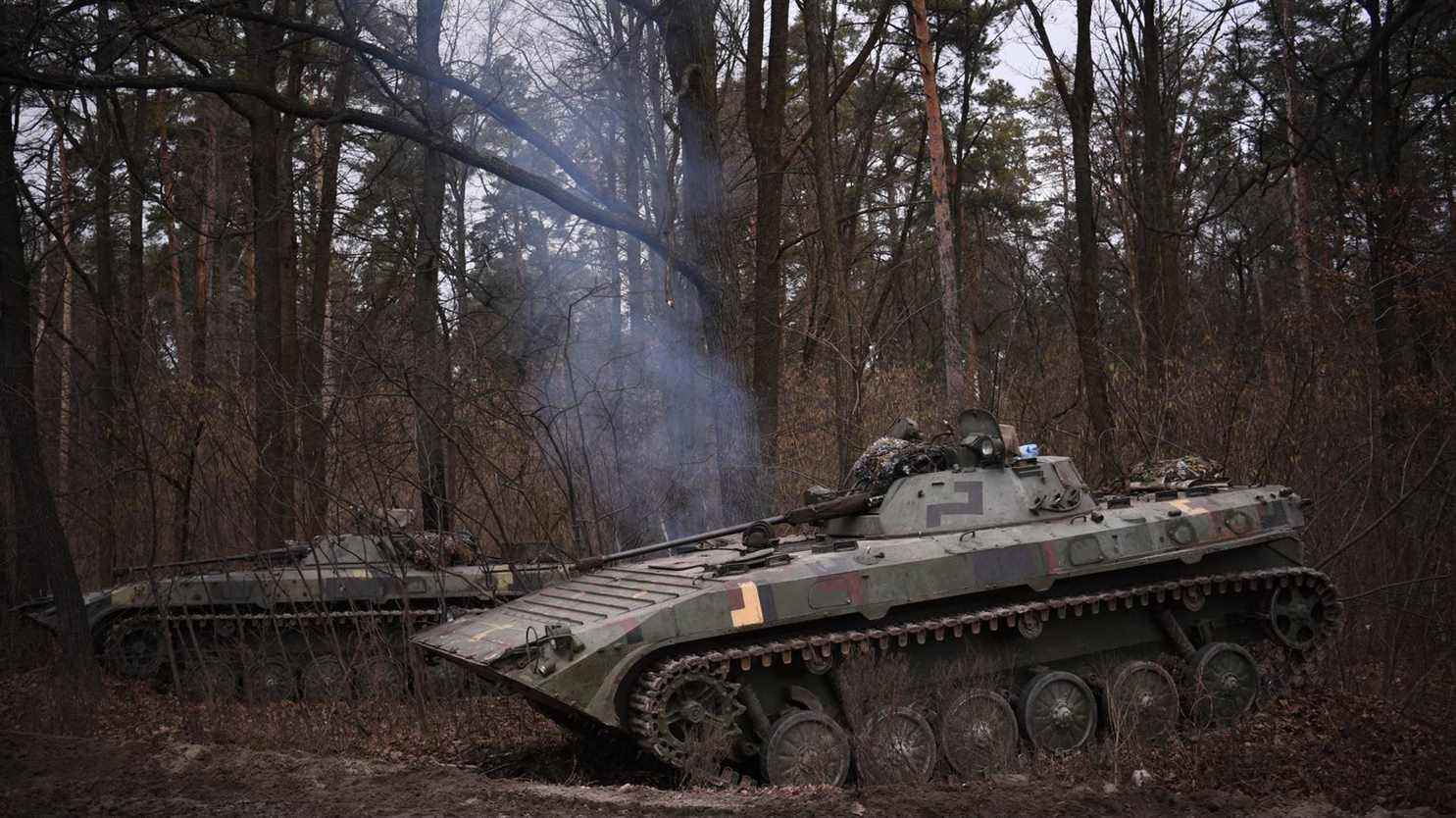This is the story of the earthen pot against the iron pot. While Vladimir Putin launched an offensive against Ukraine on Thursday, February 24, and fighting raged as far as Kiev on Friday, the Ukrainian army hardly seemed to measure up to that of the Russian giant.
>> Follow the evolution of the Russian-Ukrainian conflict in our live
Thanks in particular to financial and military aid from the West, Ukraine had launched a modernization of its forces after the annexation of Crimea by Moscow in 2014. But this former republic of the USSR still largely employs Soviet equipment and remains weakly endowed in comparison with its powerful neighbour. Supporting figures, franceinfo takes stock of the state of the armed forces on both sides.
A Russian military budget ten times larger than that of Ukraine

Ukrainian side. The country spends 4.1% of its gross domestic product (GDP) on military spending, according to the World Bank. This is a very high figure, higher than that of France and even the United States. However, with Ukraine having a relatively low GDP, this is only $5.9 billion. To this budget spent by Ukraine, we must add the aid provided by the West, in terms of equipment and logistics. AFP claims that the United States has provided more than $2.5 billion in military aid to Ukraine since 2014.
Russian side The share of Russian GDP devoted to defense is similar to that of Ukraine (4.3%). But this represents 61.7 billion dollars, that is to say a military budget more than ten times greater than that of Kiev. According to the Global Firepower benchmark site (page in English), Moscow has the second most powerful army in the world behind the United States. In this same ranking, Ukraine occupies the 22nd place.
Several hundred thousand soldiers on both sides

Ukrainian side. The time when the Ukrainian army numbered only a few thousand soldiers now seems a long way off. In 2014, when Russia invaded Crimea without a single shot, only 6,000 Ukrainian soldiers were combat-ready, according to a June 2021 US Congressional summary, taken up by The Express. Today, the Ukrainian army would number nearly 200,000 men, according to the “Military Balance” of the International Institute for Strategic Studies (IISS), quoted by AFP. Kiev can also rely on 900,000 reservists. On Thursday, the country decreed the general mobilization of the latter and of the Ukrainians subject to military conscription. Men aged 18 to 60 are now prohibited from leaving its borders.
Russian side. Opposite, still according to figures from the IISS, Russia would have approximately 900,000 soldiers in exercise in its army. Of this total, around 150,000 soldiers were stationed on the borders between Russia and Ukraine before the invasion launched on Thursday, according to a count from Washington and Kiev taken up by AFP. In addition, there are 30,000 other Russian soldiers deployed in Belarus. Vladimir Putin can also count on two million reservists.
A larger and more modern Russian ground arsenal

Ukrainian side. Beyond human resources, Ukraine has 1,184 armored vehicles and 858 tanks, three times less than the Russians, details The Guardian (article in English) based on IISS data. In addition, the best Ukrainian combat vehicles are T-64, Soviet tanks introduced in the 1960s, much less modern than those of the Russians, explained Forbes February 17. The country led by Volodymyr Zelensky can also count on more than 1,800 artillery pieces, heavy weapons allowing to target the enemy at long distance.
Russian side. Moscow has more than 5,220 combat vehicles and no less than 2,840 tanks. They can rely on T-90s, a combat tank model first marketed in the 1990s. On the artillery side, the Russian army has a total of more than 4,684 pieces, twice and half more than their opponent. The largest guns are 2S7s, capable of striking at a distance of 50 kilometers. They are used by the two belligerents, but the Russians manufacture their own model, faster and more precise than that of their neighbor, recalls Forbes. “Russian artillery is clearly ahead in volume and quality compared to the Ukrainians” summarizes Olivier Schmitt, director of studies and research at the Institute for Advanced National Defense Studies (IHEDN), interviewed by franceinfo. Russia can also count on the support of its fleet in the Black Sea, including several ships equipped with Kalibr missiles with a range of 2,000 kilometers, specifies Point (article reserved for subscribers).
Few planes on the Ukrainian side and strong anti-aircraft capabilities on the Russians

Ukrainian side. The Ukrainian Air Force has just under 200 military aircraft and 46 helicopters, according to the IISS’s “Military Balance”. But according to the magazine Forbes, only 125 of these aircraft would be combat aircraft. Furthermore, according to Pointall these devices are Russian-made, as are the helicopters.
Russian side. Russia can, for its part, count on an air force ten times larger than Ukraine, with 1,846 military planes and 832 helicopters. But Moscow’s real strength lies in its anti-aircraft capabilities. The Kremlin notably has S-400 surface-to-air missiles with a range of 1,400 kilometres. What to prevent the overflight of the whole of Ukraine, underlines Point. “The Ukrainians are in an impossible military situation, with total control of the sky by the Russians”notes François Heisbourg, special adviser to the president of the Foundation for Strategic Research (FRS), interviewed by AFP.
